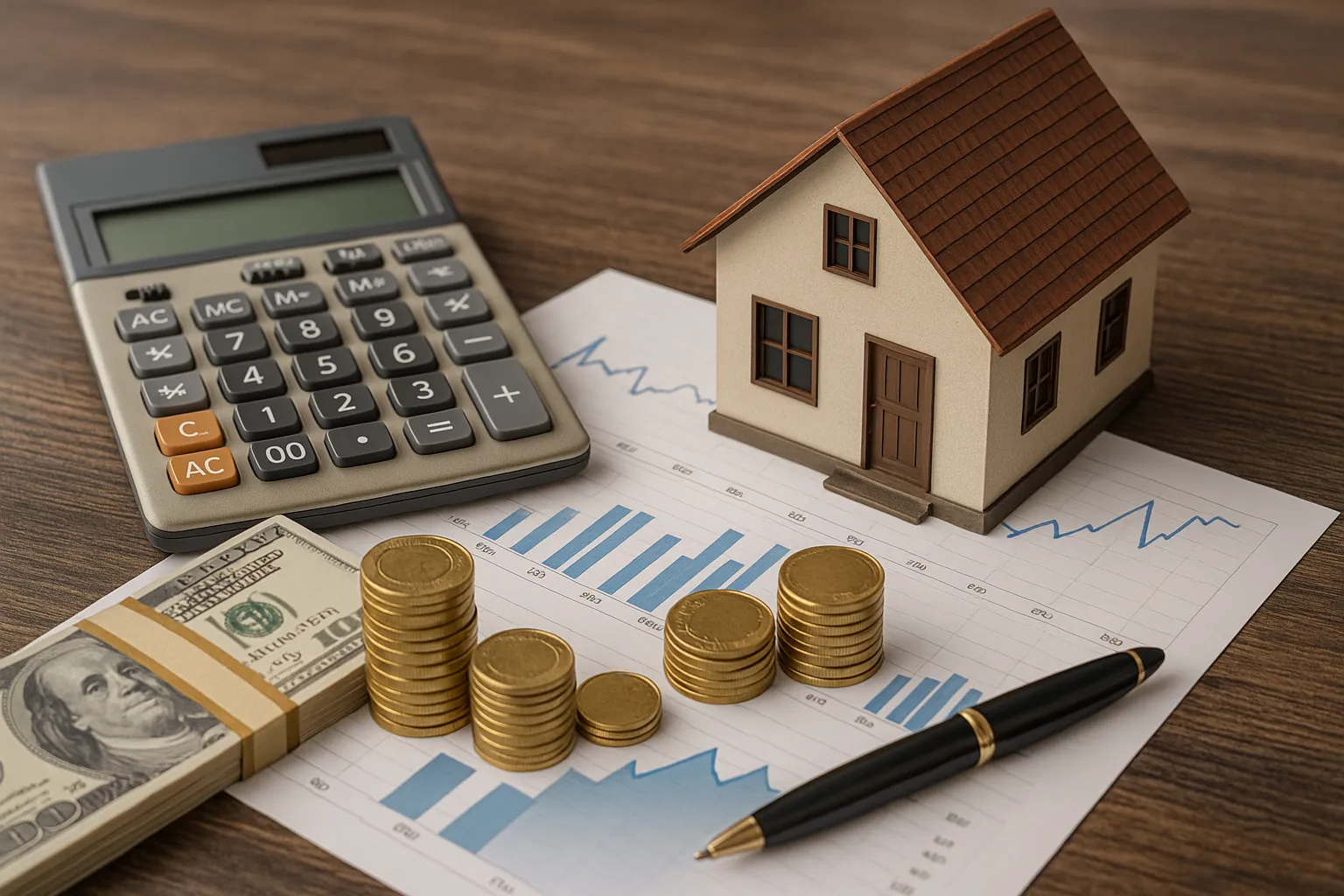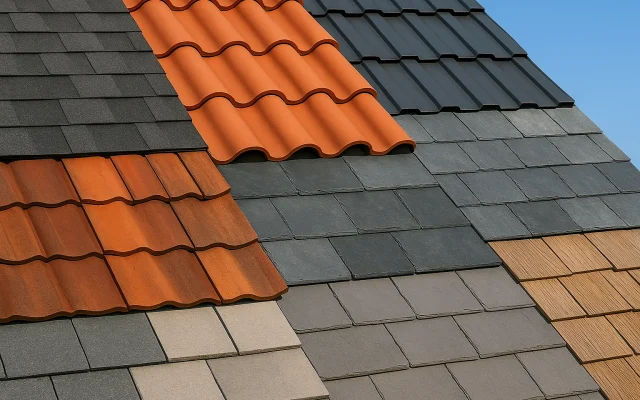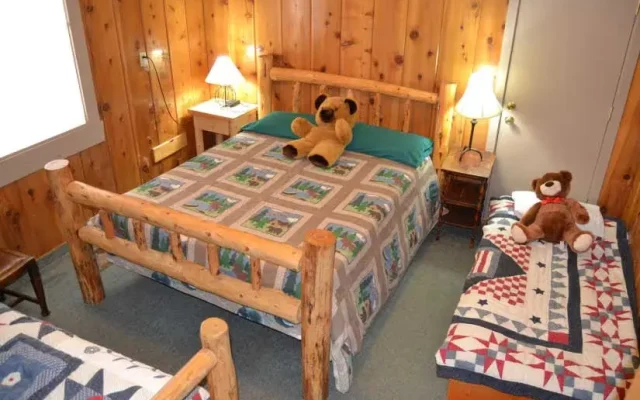The difference between a profitable rental property and a money pit often comes down to one thing: accurate cash flow analysis. Too many investors rely on rough calculations or trust the numbers a seller provides. This leads to unpleasant surprises after closing when the real expenses come due.
Successful real estate investors run detailed cash flow projections before they commit to a purchase. They account for every expense category, verify income assumptions, and build in safety margins. This article walks you through the exact process to calculate true cash flow before you buy your next rental property.
You’ll learn how to verify rental income, identify all operating expenses, factor in financing costs, and calculate your actual returns. Most importantly, you’ll discover how to build in a safety margin that protects you from the unexpected costs that inevitably arise.
Start With Gross Rental Income
Your cash flow analysis begins with accurate rental income projections. Many investors make their first mistake here by accepting the seller’s rent estimate or using asking rents from online listings.
You need to verify what tenants actually pay in your target area. Pull comparable rental listings on Zillow, Apartments.com, and local property management websites. Look for units with similar square footage, bedrooms, and amenities in the same neighborhood.
Call three to five landlords with similar units currently listed. Ask about their actual rent, how long it took to fill the unit, and what concessions they offered. This gives you real market data instead of optimistic projections.
If the property already has tenants, review their current lease terms carefully. Check when the lease expires and whether the current rent aligns with market rates. A tenant paying below-market rent means you need to account for potential turnover costs or accept lower income.
Apply a vacancy rate to your gross rental income from the start. No rental property stays occupied every single day of every year. Most markets require a 5-8% vacancy factor, though some high-turnover markets may need 10% or more.
You can check local apartment association data or ask property managers for typical vacancy rates in your area. The formula is straightforward: Gross Rental Income × (1 – Vacancy Rate) = Effective Rental Income. This effective rental income becomes the foundation for all your cash flow calculations.
Calculate All Operating Expenses
Operating expenses will consume 35-50% of your rental income. Investors who underestimate these costs set themselves up for negative cash flow. You need to identify every expense category and use realistic numbers.
Request actual property tax bills from the seller or pull them from county records. Don’t assume the seller’s tax rate will be yours. If they claimed a homestead exemption, your taxes will be higher once you convert the property to an investment. The IRS provides detailed guidance on rental property tax deductions that affect your overall expense calculations.
Call insurance agents for quotes specific to investment properties. Landlord insurance costs 15-25% more than homeowner policies. Get quotes from at least three carriers and use the middle estimate in your calculations.
Include property management fees even if you plan to self-manage initially. Your time has value, and you may want to hire a manager later as your portfolio grows. Most property management companies charge 8-10% of gross monthly rent, plus a leasing fee equal to one month’s rent when they place a new tenant.
Properties require ongoing maintenance regardless of age or condition. A better approach uses 10-15% of gross rental income for maintenance and repairs. Older properties or those with deferred maintenance need the higher end of that range.
Capital expenditures differ from routine repairs. CapEx covers major system replacements like roofs, HVAC units, water heaters, appliances, and flooring. Calculate the remaining useful life and replacement cost for each major system, then set aside monthly reserves. Most properties require $1,500-3,000 annually for CapEx reserves.
Clarify which utilities the tenant pays versus which ones you cover as the landlord. Even if tenants pay most utilities, you typically cover water, sewer, trash, and landscaping in single-family rentals. Get actual utility bills from the seller or call utility companies for average costs.
If the property has HOA fees, get the current fee schedule and ask specifically about planned increases or special assessments. Review HOA meeting minutes from the past year to spot problems. HOA fees have a nasty habit of increasing faster than rents.
Don’t forget smaller expenses that add up over the year:
- Pest control services
- Snow removal or landscaping
- Legal and accounting fees
- Marketing costs for vacancies
- Miscellaneous repairs and supplies
These often total $500-1,500 annually. Include a line item for miscellaneous expenses at $100-150 monthly to cover unexpected costs.
Factor in Your Financing Costs
Your mortgage payment typically represents your largest monthly expense. The financing terms you secure directly determine whether a property produces positive cash flow. Small differences in interest rates or down payment amounts dramatically affect your monthly costs.
Investment property loans come with rates 0.5-0.75% higher than primary residence loans. Lenders view rental properties as higher risk. Shop multiple lenders to find the best combination of rate and terms.
Different loan types offer different trade-offs between qualification requirements and cost. Conventional loans require 15-25% down payment and full income documentation. You’ll need tax returns, W-2s, and pay stubs to qualify, but these loans typically offer the lowest rates if you have strong personal income and credit.
Portfolio loans offer more flexibility in underwriting but usually charge higher interest rates. Banks keep these loans on their own books rather than selling them. This allows for creative terms but costs more.
DSCR loans qualify you based on the property’s income rather than your personal income. These work particularly well for self-employed investors or those with complex tax returns who might struggle with conventional qualification. Since these loans use the debt service coverage ratio to determine eligibility, checking current DSCR loan rates helps you understand whether the rental income will cover your mortgage payments with enough cushion for positive cash flow.
Model your cash flow with different financing scenarios. Compare a 20% down payment versus 25% down. Look at 30-year versus 15-year amortization schedules. A seemingly small rate difference of 0.25% changes your monthly payment by $30-50 on a typical investment property.
Calculate how much additional down payment you’d need to reduce your monthly payment by $100. Often, you’ll find that putting $25,000 more down only saves you $75 monthly. That’s a poor use of capital compared to buying another property.
Conventional loans with less than 20% down require private mortgage insurance. PMI on investment properties costs significantly more than on primary residences. Expect to pay $100-200+ monthly on a typical investment property. Factor PMI into your cash flow calculations until you reach 20% equity.
Calculate Your True Cash Flow
Now you combine all the pieces to see your actual cash flow. This is where optimistic projections meet financial reality. Many deals that looked great at first glance fall apart once you run complete numbers.
Start with your effective rental income after vacancy. Subtract all operating expenses: property taxes, insurance, management fees, maintenance, CapEx reserves, utilities, HOA fees, and miscellaneous costs. Then subtract your mortgage payment (principal and interest) plus any PMI.
What remains is your monthly net operating income or cash flow. Multiply by 12 to see your annual cash flow. This number should be positive, and ideally substantial enough to justify the effort and risk.
For properties with positive cash flow, calculate your cash-on-cash return. Divide annual cash flow by your total cash invested. Total cash invested includes down payment, closing costs, and any immediate repairs or improvements.
Most investors target 8-12% returns, though acceptable returns vary by market and risk level. Compare this to alternative investments like stocks, bonds, or other real estate opportunities. A property that produces 6% cash-on-cash return may not justify the time and hassle involved.
Calculate what rent you’d need to break even at zero cash flow. This reveals your margin of safety. If you need $1,900 rent to break even but market rent is $1,800, you have zero cushion.
Properties with thin margins leave no room for unexpected expenses or rent declines. Look for deals where you could drop rent by 10% and still produce positive cash flow. This cushion protects you during economic downturns or high vacancy periods.
Build in a Safety Margin
Your calculated cash flow number represents a best-case scenario. Properties always cost more than you project. Successful investors use conservative assumptions that build in safety margins.
Project rents slightly below current market rates. If comparable units rent for $1,800, use $1,750 in your calculations. This accounts for the possibility that your unit is slightly less desirable or that market rents soften.
Add a 10% buffer to your expense estimates. If you calculated $1,000 monthly in operating expenses, use $1,100 in your final projections. Properties have a way of costing more than spreadsheets predict.
Assume you won’t increase rent for at least two years. If the deal only works with annual rent increases, it doesn’t work at all. Market conditions or local regulations may prevent increases.
Watch for these red flags that indicate poor cash flow potential:
- Sellers who claim you can raise rents significantly after purchase
- Negative cash flow that relies on appreciation to make sense
- Optimistic projections that don’t match actual market data
- Properties with no reserves for significant expenses
- Deals that require everything to go perfectly
Run the reserves test on every property. Can you cover six months of expenses with no tenant? This includes mortgage, taxes, insurance, and utilities. If not, you’re overleveraged and one bad tenant away from serious financial trouble.
The properties that survive conservative analysis are the ones worth buying. You want deals that still produce positive cash flow even when you use below-market rents and above-market expenses. This approach keeps you profitable even when reality doesn’t match your projections.
Conclusion
Cash flow analysis takes time, but protects you from bad deals. Most real estate losses stem from purchasing properties with overly optimistic projections that overlook real-world costs. Use this systematic approach for every property you consider.
Verify rental income with actual market data, not seller claims. Account for every expense category, from property taxes to capital expenditures (CapEx) reserves. Model different financing scenarios to understand how rates and terms affect your returns. Calculate your actual cash flow with conservative assumptions.
The deals that still work after you apply vacancy rates, expense buffers, and safety margins are the ones that produce reliable returns. These properties generate income in both good and bad markets, with difficult and easy tenants. Whether you’re considering traditional rentals or newer build-to-rent communities in Houston, the same cash flow principles apply. Once you identify properties with genuine positive cash flow, compare financing options to maximize your returns while maintaining adequate reserves for the inevitable surprises that come with rental property ownership.
The key is staying disciplined with your numbers and never compromising on your safety margins, regardless of where you invest.
Frequently Asked Questions (FAQs)
Cash flow is the money left over after collecting rent and paying all expenses, including mortgage, taxes, insurance, and maintenance.
Because seller-provided numbers or online estimates are often inaccurate, verifying ensures you base your calculations on real market data.
Check comparable listings on rental platforms and call local landlords or property managers to confirm actual rents.
Most markets require a 5–8% vacancy estimate, while high-turnover areas may need 10% or more.
Include taxes, insurance, management, maintenance, utilities, HOA fees, CapEx reserves, and miscellaneous costs.
Maintenance covers routine repairs, while CapEx includes major replacements like roofs, HVAC systems, and appliances.
Small changes in interest rates, loan type, or down payment can significantly raise or lower your monthly mortgage cost.
It’s the annual cash flow divided by your total cash invested, showing the actual return on the money you put into the deal.
Using lower rents and higher expenses protects you from unexpected costs that can turn a good deal into a bad one.
Choose deals where you can still cash flow with slightly lower rent or higher expenses, ideally with at least a 10% cushion.
Even small increases in expenses or short vacancies can quickly push a thin-margin property into negative cash flow.
You should be able to cover at least six months of mortgage, taxes, insurance, and utilities with no rental income.







